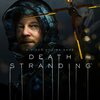 Death Stranding
Death Stranding
Developer: Kojima Productions
Publisher: Sony
Platforms: PS4
Price: $60
Release Date: Nov. 8, 2019
Copy Purchased By Reviewer
Death Stranding is a special game. That’s the one concept that anyone who has picked it up can attest to; how absolutely unique it is. Is it a whole new genre like Hideo Kojima would have you believe? No. Even though it may say on the box that Death Stranding is the progenitor of the Strand game genre, that subclass of games does not exist yet. This is an action adventure title... just one that's unlike any other game that I’ve ever played.
Death Stranding isn’t conventional. There’s very few old ideas, with everything that you see and do feels fresh and new. The game also isn’t conventionally fun, either. It involves a lot of walking, a lot of sneaking, and a lot of falling down. When I did have fun in Death Stranding, it was the most I had in a while. It has the ability to engage and enthrall a player, immersing them in a massive, serene world. But as quickly as those feelings come, they vanish, replaced with frustration and boredom.
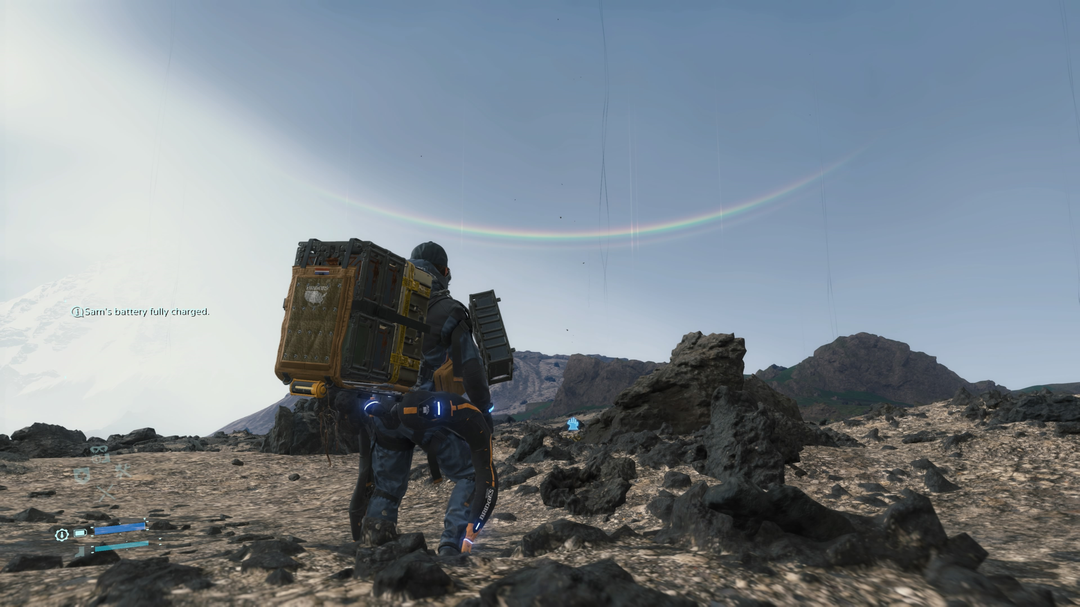
For a game about unity and connections, Death Stranding has caused a lot of internal dissonance. Parts of me hate it and parts of me love it, but by Death Stranding's end I was happy to have gone through it all.
Reconnect America For Fun And Profit
The gameplay loop of Death Stranding is rather straightforward. You pick up packages, trek across the wasteland of America, and get them to their destination in one piece. Ultimately, the goal of delivering these packages is to connect the estranged citizens of America and form a government once more. You do all of this as Sam Porter Bridges (Norman Reedus), a porter for Bridges. You read that right, his name really is two thirds his profession.
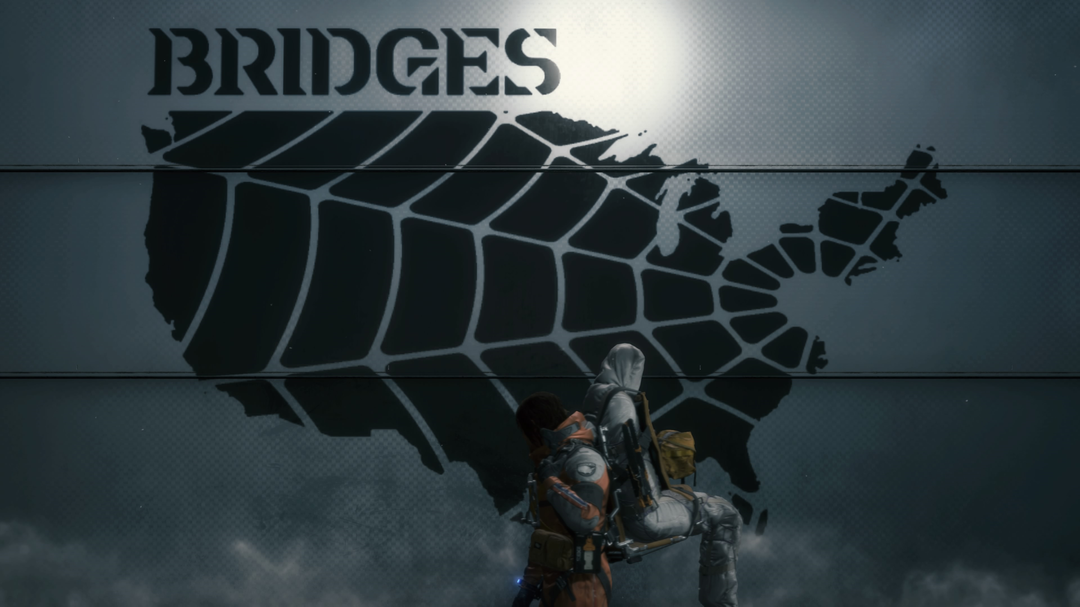
That's it, that's the game - roll credits!
Sam is supported by a cast of characters all similarly named. Take for example Die-Hardman, who is hard to kill, or Deadman, whose organs mostly come from other bodies. Of course, they’ll remind you of the origin of their names multiple times to make sure the various metaphors aren’t lost. It’s almost insulting how repetitious the writing is for these characters, except annoyance takes the cake. When they aren’t explaining their names again, and again, and again, the supporting cast is dumping exposition on you by the truckload. Because Death Stranding is a Kojima title, you know there’s alot to expose. Maybe they were worried we'd forget some of the plot points?
Even though they were sometimes overly talkative, the cast of Death Stranding left a charming impression on me. Each member had moments where they broke through the tough outer shell of Sam, and inside those tender moments there was a slight repose from the unyielding danger of the outside world. That’s not to mention the downright brilliant jobs done by these character’s actors. That goes double for Tommie Earl Jenkins and Margaret Qualley, who voiced Die-Hardman and Mama respectively. Their presence and emotion bring impact and life to the otherwise repetitive writing of Death Stranding. Sadly, our main protagonist’s performance isn’t nearly as stellar. Norman Reedus grunts out Sam’s few complete sentences and phrases throughout the game, never really adding anything to the character except his usual gruffness.
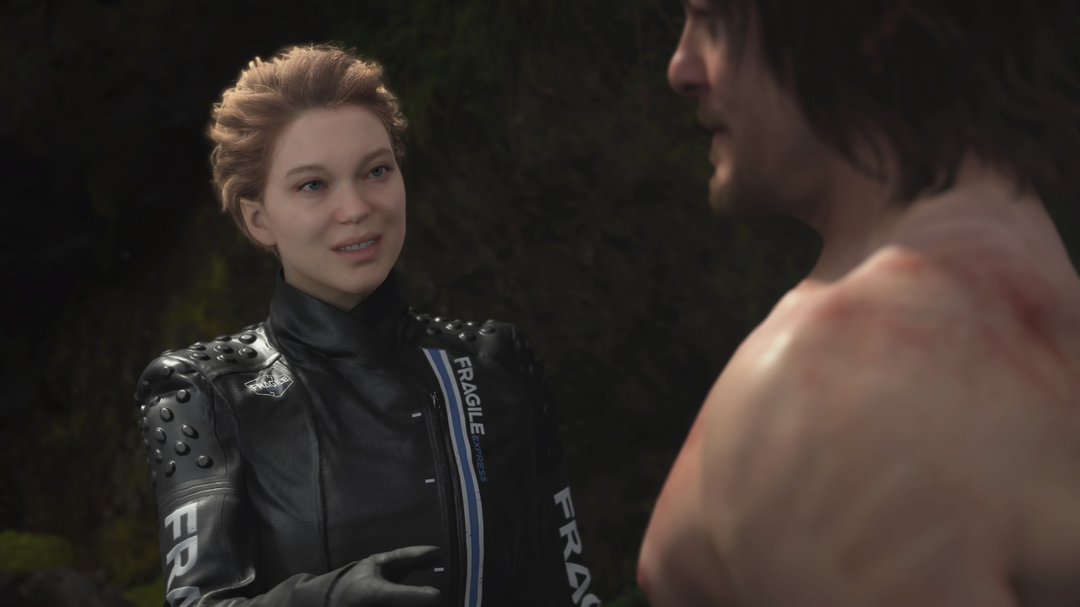
Fragile is one of the cornier characters, but her relationship with Sam is the most interesting.
As for the story of Death Stranding, there’s not much I can say without spoiling it. It’s very much something you would expect from a game with the name Kojima plastered all over it. There’s an ungodly amount of pseudoscience, metaphors on metaphors on metaphors... and of course long, unforgiving cutscenes. Through most of Death Stranding I was interested in this new version of America, haunted by ghosts and plagued by rain that advances time. I wanted to solve its mysteries. However, at one point nearing the game’s end, everything is revealed in a flood of dialogue. There’s no steady drip of clues that could let you piece together the mystery for yourself, instead new plot points are hastily added so everything makes sense by the time the credits roll. The final two hours of Death Stranding are its sloppiest, mostly because of a seemingly never ending monologue. By the game’s end I almost felt like a joke had been played on me, because this vast, interestingly designed and written story was tied into a frustrating end. Although its final moments (and by final, I mean the last 15 minutes) are gripping and evoke emotion, it’s spoiled by the disappointing remainder of the game’s last chapter.
The story that Death Stranding took roughly 65 hours to tell me was muddled. Its messaging was unclear, metaphors challenged each other, and I couldn’t tell if the game was making statements to make me think or because they were convenient and clever. For example, take the handcuffs that members of Bridges wear. They connect you to an online network that connects the remainders of America to one another. You’re literally shackled by the internet, which would be a powerful statement; but then the game turns around and says that this network is the best chance for humanity and America. The clearest message that comes from Death Stranding is that connections to other people are immeasurably strong and create hope. I only wish that some of the other things the game was trying to say didn’t fall on top of each other.
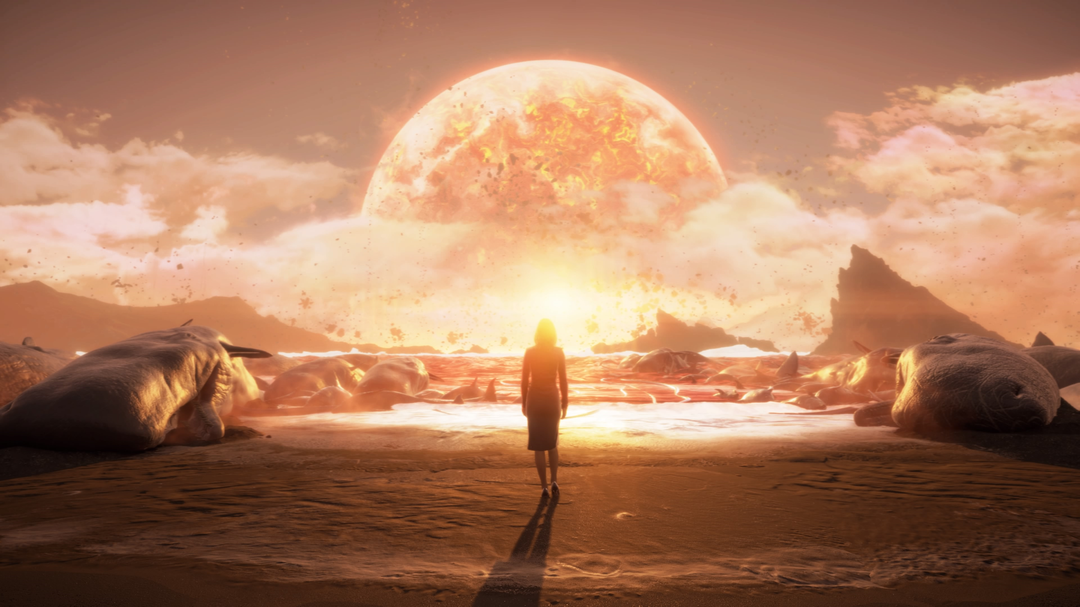
I'm sure there's supposed to be some meaning behind this scene, but I'm not sure what it is.
Walking More Than 10,000 Miles
Like I said before, the main gameplay loop of Death Stranding revolves around you being the best post-apocalyptic UPS man you can be. That’s an oversimplification, I don’t actually think that this game is a walking simulator, or a postman simulator. It is also not a, as Kojima calls it, “strand game.” Death Stranding is an action adventure game, and while it has its shortcomings, its successes more than make up that difference.
Any travel across a post-apocalyptic-anywhere has its risks and dangers, and in Death Stranding these come primarily in the form of BTs, the ghosts of the dead turned away from the afterlife. These shambling invisible creatures are the deadliest opponent you’ll encounter, but they’re also the easiest to get around. Sneaking around them is a breeze, thanks in part to your BB, the baby companion strapped to your chest. If you’re caught by BTs, they try to drag you towards a larger one, which evolves into a mini-boss. At the start of the game these encounters are difficult and genuinely frightening. However around the fourth chapter you get weapons that deal with BTs specifically, and make travelling through areas with them a breeze.
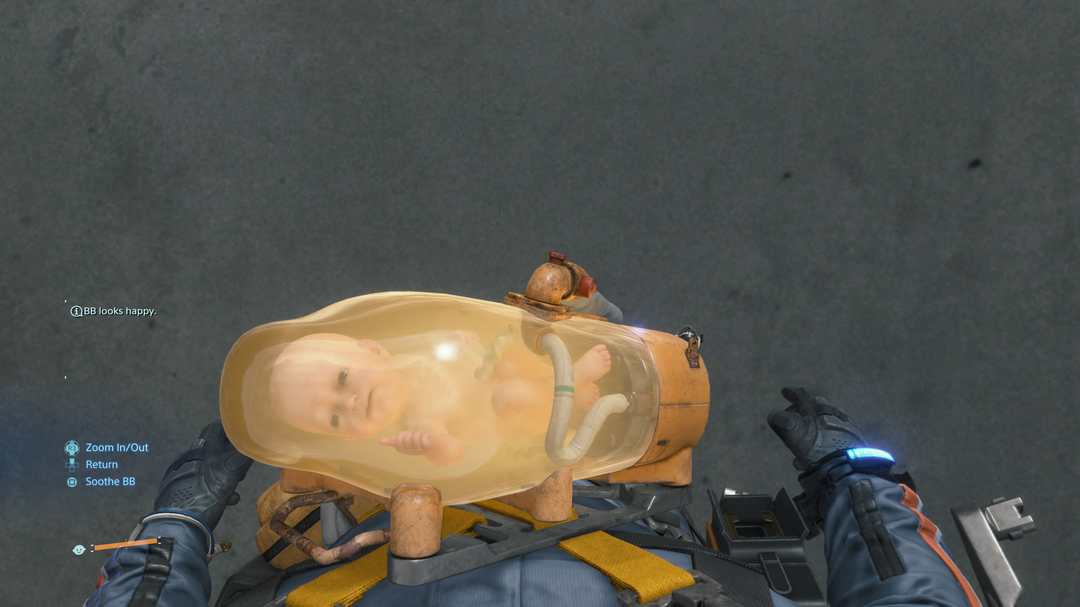
Thanks for the thumbs up, BB!
You’ll also have to deal with humans driven mad by their need to deliver packages. Oh, and terrorists. But I never found either group to be as deadly as BTs since I could just drive past them with no issue.
When you’re not being hassled by any enemy groups or monsters, travelling through Death Stranding’s America is a joy. Planning your routes between delivery locations, figuring out what you can and can’t bring with you, it’s extremely meticulous and takes a bit of time. Once you’re finally out there and walking though, you’re hit with a wide open space and the silence that lives in it. It’s oddly peaceful, and a true pleasure to travel through. That’s not to say the terrain doesn’t present its own challenges. If you’re walking around with a heavy, unstable load you can trip and fall; damaging your cargo, hurting yourself and worst of all stressing out your BB. When the ground is covered in rocks primed for toe-stubbing, the job gets that much harder.
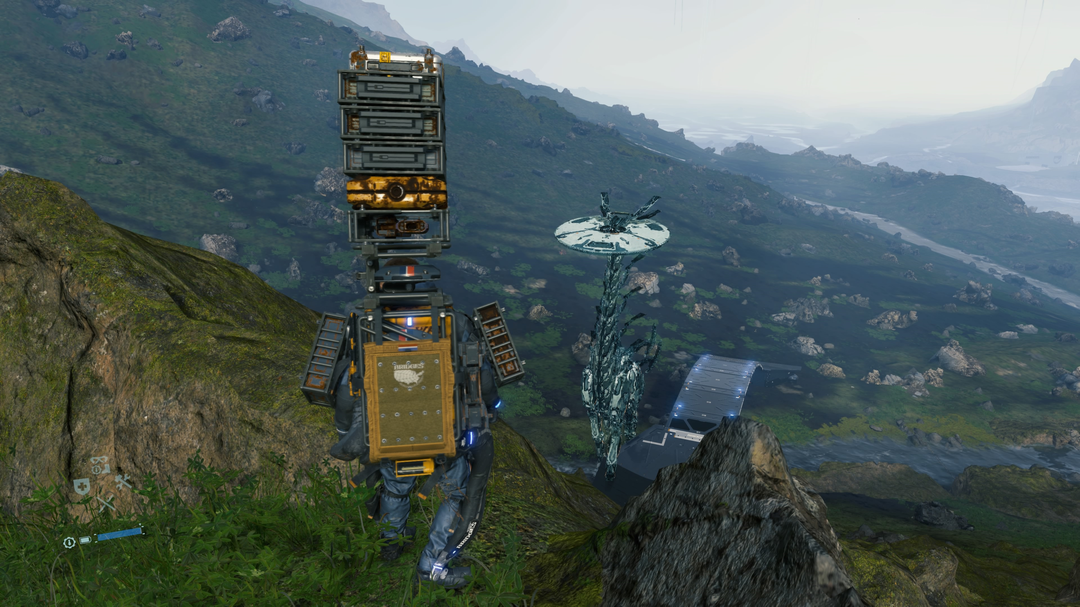
Players can build structures to make getting around easier, eventually customizing them with music and holograms.
Needless to say there’s alot of management that goes into this game. You’ll be managing your load, your equipment, your stamina, your gear’s durability and your health... the list goes on and on. I strangely found myself enjoying all of these different changing values and the stories they made. When you’re out in the wild and have to decide whether or not to take cargo with you, or if your boots wear out and you didn’t bring another and now your feet are bleeding these values are creating stories.
What makes Death Stranding truly unique is its take on asynchronous co-op, or playing with other players without seeing them. If you’ve played Dark Souls titles before you’re familiar with the concept, however Death Stranding takes it to the next level. As you progress through the game you gain the ability to build structures that can help you get around easier, like bridges, ladders and climbing ropes. Eventually you’ll start finding structures made by other players that can help you get out of a pinch. This even extends to cargo and vehicles, both of which you can find lying about; I still wonder what happened to that player who left his truck in the middle of a mountain side, but it saved my life! Through this system, you work together with everyone else playing the game to make traversal through an area easier. In the beginning zones, that could translate to bridges across rivers or dumping materials into an auto paver for actual roads. Later on, I ended up using half of someone else’s zipline network to make my own across the mountains so I never had to trudge through snow. It’s this feeling of communal building and being a part of something bigger that makes some of the best stories told in this game.
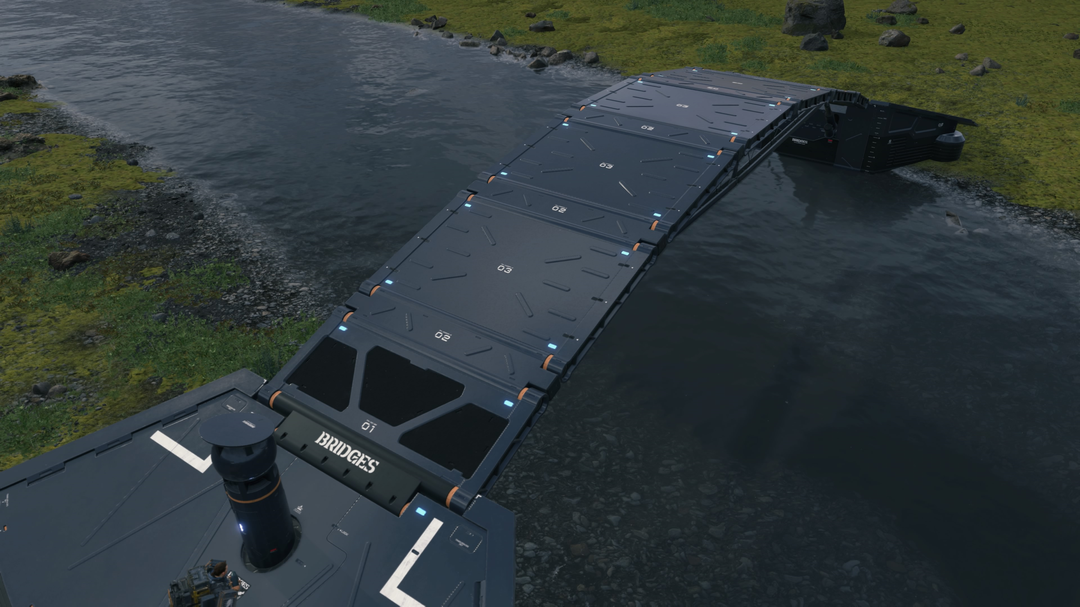
It's rewarding to see the likes on a structure you build go up as people use it.
Much like Sam, Death Stranding has points where it falls flat on its face. There were times when I was wandering to deliver my next package and I suddenly become disillusioned. I would go from being invested in my current delivery to totally uncaring, so much so that I’d turn the game off. As bad as that might seem, that was usually around 3AM; It took a long time playing Death Stranding to realize I was just delivering packages to NPCs.
Where the game really suffers is its boss fights, or rather any time the game wants you to fight anything. Combat is clunky, with guns feeling unwieldy, slow, and inaccurate. That goes double for hand to hand combat if you're unlucky enough to find yourself in a situation where it comes down to using your hands. This downside is only exacerbated by the game’s combat oriented boss battles. Usually you’ll be fighting BTs, although they’ll be a little bigger than the usual ones, they’re no stronger. Then there’s the battles against Cliff, a former soldier. These encounters are mainly gunfights against other humanoids, and they’re the game at its worst. Death Stranding was not designed to be a third person shooter, and it does not work effectively as one. Sluggish and clunky controls paired with an inhospitable UI for switching weapons made every one of these fights a race to finish it as fast as I could.
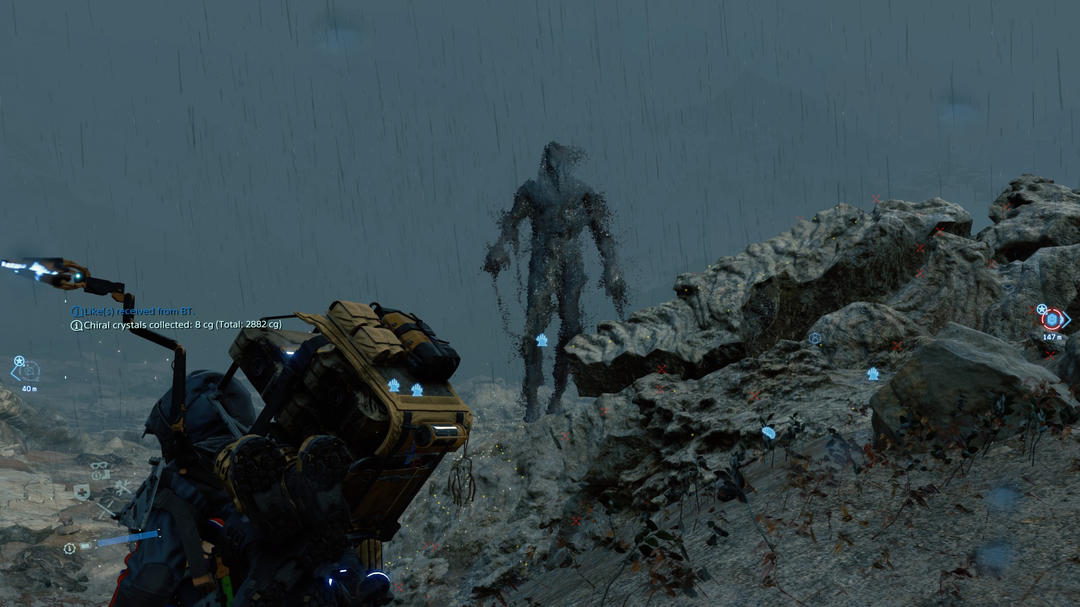
BTs are designed to haunt you both in and out of the game.
When you finally get some rest and relaxation, away from the rock filled paths and invisible specters that want to eat you, you head to your safehouse. This area serves as your home base; you can rest there, shower, interact with your BB and customize your gear. It’s a highly interactive area, and one that eventually feels like home. This feeling is then ruined by the excessive use of cutscenes in between any action. Taking a shower? Three cutscenes. Using the bathroom? Three cutscenes. Even taking the elevator down to your safehouse has too many cutscenes. For the first hour of the game I watched them all through, but after that I was hammering away at the skip button. It ended up being a chore to skip them all and I’d wished they weren’t even present, as they only get in the way of a game that already takes a long time to play.
Death Stranding’s Division
Since you made it to this point you might understand my frustration with this game and why I think it’s incredibly divisive. Its characters, fantastically acted out and designed, are dreadfully written. Its story is a mysterious trip until its final moments, when every ounce of enjoyment is sucked straight from your brain. Its gameplay is layered and requires thought, until you just get tired of it or the game forces a gun in your hands. There’s so many times I’ve said “I love Death Stranding but…” and gone on about this laundry list of grievances.
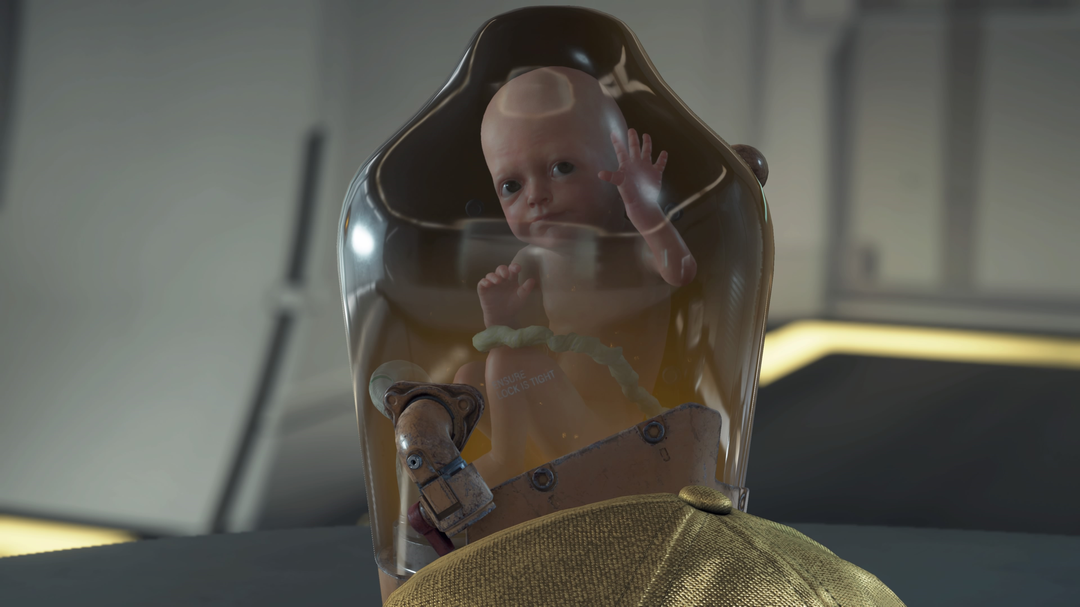
No matter what you think of the game, BB loves you!
So I suppose the question comes down to this: should you get Death Stranding? And to answer, I’d say it depends on a lot of things. If you’re a fan of all of Kojima’s work, chances are you have the game by now, and if you don't, you should get it. It’s the epitome of a Kojima game. If you’re not and you’ve been thinking about picking it up, I’d say it’s absolutely worth it. Don’t watch a walkthrough or anything; Death Stranding wasn’t made to be watched, it was made to be played. But if you’re one for a fast paced game, something that gets your blood pumping and adrenaline rushing, avoid this title. Playing Death Stranding itself is a duality, you’ll either find yourself loving the game or hating it. For a game all about connections, what it's managed to do in the gaming world is divide opinions.